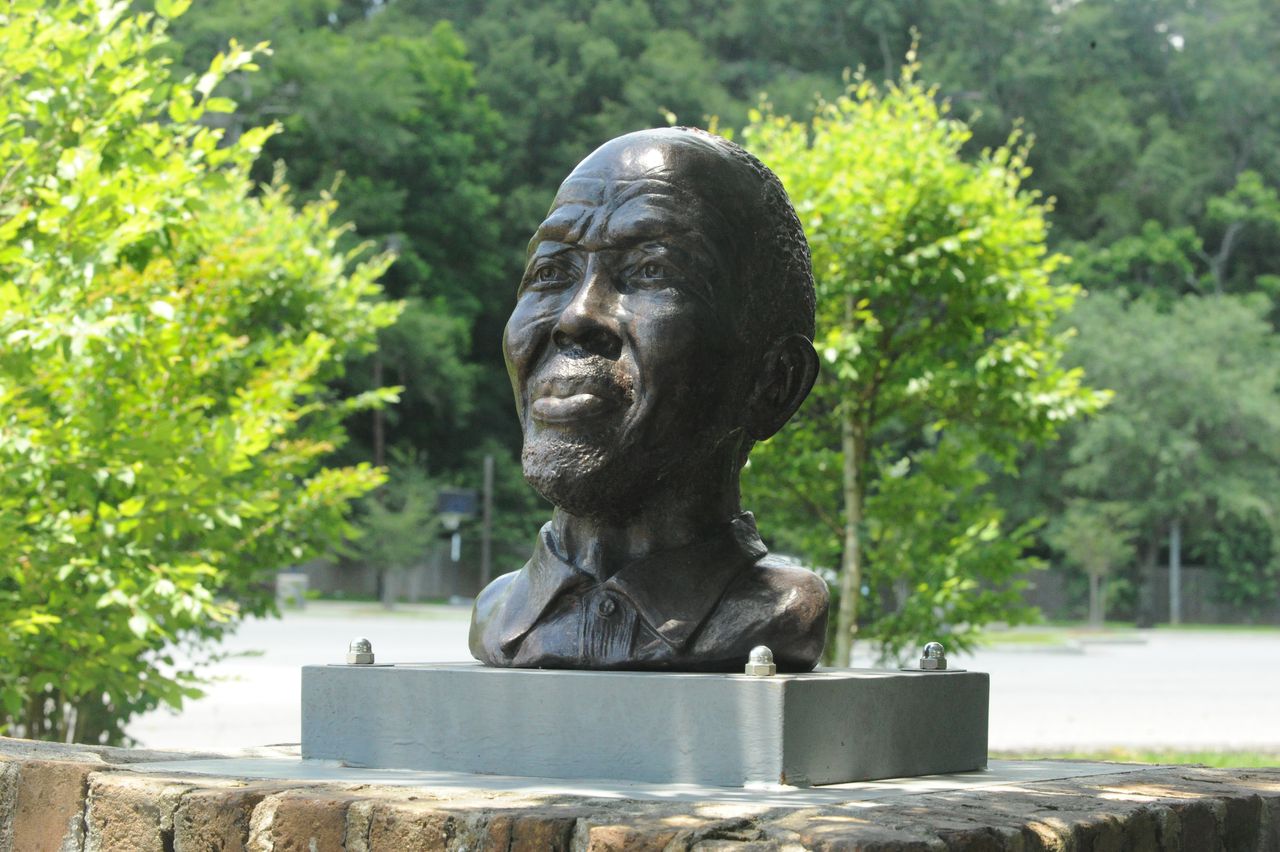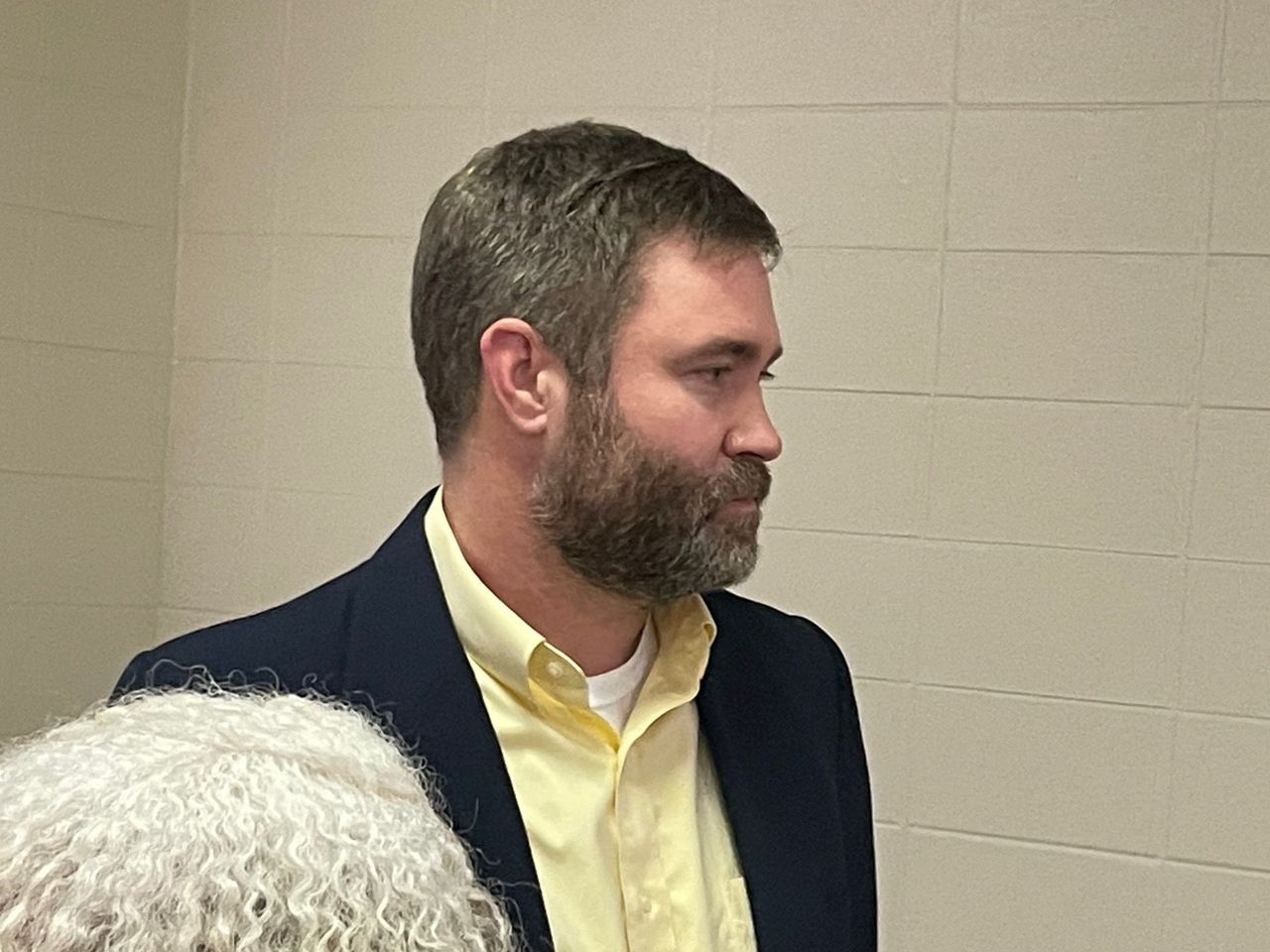Alabama officials: New I-10 project means less toll avoidance through historic Africatown
Four years ago, the prospects of a $6 one-way toll across a future bridge and rebuilt Interstate 10 Bayway officials worried officials about the motorists attempting to avoid tolls would detour through Mobile’s Africatown community.
They increased traffic, they fear, hinder the area’s tourist plans for generations to come.
Related content:
For longtime Africatown residents like Thelma Maiben-Owens, the additional traffic from the I-10 project exacerbates an already noticeable problem of large semi-trucks hauling hazardous materials to the nearby industrial plants.
“Africatown has become a dumping ground,” said Maiben-Owens. “It’s not getting better. It’s getting worse. We receive nothing but broken promises.”
Toll avoidance
But state transportation officials believe the latest I-10 Mobile River Bridge and Bayway project – with a cheaper $2.50 one-way toll – will reduce so-called toll avoidance or diversion and will have a lessened impact from vehicles circumventing the new bridge and rebuilt Bayway for a free route.
One of those main free routes leads to the Africatown Bridge and Bay Bridge Road – a multi-lane state route that cuts through the heart of Africatown that was founded after the Civil War by the survivors of the slave ship Clotilda.
Edwin Perry, project manager for the I-10 Mobile River Bridge and Bayway project, meets with Africatown area residents and activists on Thursday, Jan. 26, 2023, at the Robert L. Hope Community Center in the heart of Africatown in Mobile Ala. (John Sharp/[email protected]).
Edwin Perry, manager on the I-10 project for ALDOT, told a group of about two dozen Africatown residents and community activists on Thursday that forthcoming studies will likely show traffic “won’t be as big of an impact as it is now.”
Perry said the traffic impact studies, set to be released within the next month, will illustrate a lessened impact from toll diversion because of the lowered toll amount, and because the Wallace Tunnel – previously considered as a future tolled route under the now-defunct 2019 plan – remains a free route under the current proposal.
“The big change (since the 2019 proposal) is that the tolls are much lower,” Perry said. “There is an additional free route. We got to study how the traffic will change from 2019.”
He added, “We still have to see what those traffic numbers are. What we anticipate in those numbers is that the Wallace Tunnel, as a free route, is less likely to have as much toll diversion as the previous (project).”
Project development
The $2.1 billion version of the project in 2019 was poised to be a public-private partnership development, financed largely with one-way $6 tolls or a $90 monthly pass for frequent users. That project crumbled under the criticism from anti-toll conservatives in Baldwin County and was declared “dead” by Gov. Kay Ivey after the Eastern Shore Metropolitan Planning Organization voted to remove the entire project from its plans.
Related: Ivey praises Mobile, Baldwin’s $2.7 billion I-10 project three years after saying prior plan ‘dead’
The newest version is a $2.9 billion project that will be managed solely by the government and will not involve private partners. It is proposed to be financed through mostly borrowing and financed mainly with a $2.50 toll or a $40 monthly pass for people who use the route frequently. An ALGO Pass will be needed to secure those rates, otherwise vehicles will be charged a $5.50 one-way toll.
The free routes off I-10 will include the Wallace Tunnel and along the Spanish Fort Causeway. The Africatown Bridge is the other.
The scope of the project includes a 215-foot-tall bridge over the Mobile River south of downtown, and a new 7.5-mile Bayway extending from Mobile to Daphne.
Related: What will happen to the existing I-10 Bayway along coastal Alabama?
Perry said ALDOT will name the design-build team for the bridge soon. Two teams, both with U.S. headquarters, applied to oversee the bridge portion of the project. Both teams had to submit their statements of qualifications to ALDOT before Christmas.
Within the next month, Perry said a team will be selected for the Bayway portion of the project.
“We’ll finalize the traffic model, select a team member to work on the design project and the design-build for the Bayway,” Perry said.
The project is expected to be completed by 2028.
The scope will likely include some work in Africatown that will make the wide span of Bay Bridge Road more pedestrian friendly.
The project’s final environmental impact statement (EIS) released in 2019, showed the state was considering crosswalks at all signalized intersections along Bay Bridge Road, a “shared use path” for bicyclists and pedestrians from the I-165 ramp at Bay Bridge Road to U.S. 90 on the east side of the Mobile River, the development of an “access management plan” to facilitate access to and from destinations along the U.S. 90/98 Causeway, installing landscaping and additional traffic signals and medians.
Africatown speaks out
Residents and community activists also believe the state should partner with local officials and consider further steps such as the construction of a pedestrian bridge across Bay Bridge Road, new parks and a feature underneath the Africatown Bridge that would be similar to the 10-block City Walk underneath the I-59/20 in Birmingham.
“They have a whole city underneath the interstate,” said Joe Womack, executive director with Africatown-C.H.E.S.S., an organization focused on making sure the community is “Clean, Healthy, Educated, Safe, and Sustainable.”
He added, “We should be able to do the same. We have the opportunity for tourism here. We want to develop those things.”

The Africatown Heritage House as pictured on Thursday, January 26, 2023, in Mobile, Ala. (John Sharp/[email protected]).
Indeed, Africatown is poised to bring in tourists at some point in 2023. The Africatown Heritage House is expected to open later this year. The unveiling of the house’s outdoor sculpture will take place next Friday. A Welcome Center, across from the Old Plateau Cemetery – where many of the survivors of the Clotilda, and their descendants are buried – is also in the works.
Clotilda is the last ship to bring slaves to the United States 162 years ago. Many of the slaves settled in what is known as Africatown after the Civil War. Efforts to create a tourist spot in that community have sped up exponentially since remnants of the ship’s hull were discovered in 2019 in the waters near Mobile.
Visit Mobile, on Wednesday, graduated its first “experience givers” who will serve as tour guides and storytellers for Africatown.
ALDOT and the community are working together through the creating of a steering committee aimed at looking at the traffic issues through the community and to consider how the future tourism opportunities will be impacted.
Perry said the state is working to “incorporate” pedestrian accessways to where “people will want to go” during community tours.
Activists say they are appreciative of ALDOT’s involvement with the community, something they say was missing during the 1980s and 90s when I-165 was built and Bay Bridge Road was expanded through the community.
Those projects have long been blamed by Africatown activists and residents for exacerbating urban blight that currently plagues the community that is approximately six miles north of downtown Mobile.
“ALDOT opposed Africatown seriously,” said Ramsey Sprague, president of the Mobile Environmental Justice Action Coalition (MEJAC), a decade-old organization that has repeatedly pushed back against public interests that could lead to more industrial encroachment into the community.
Sprague said that past state records on previous projects that affected Africatown are no longer available.
“What we are going here through this project with the Africatown Steering Committee is a good faith effort that we don’t want that to happen again,” Sprague said. “ALDOT of the 90s failed this community. The political leadership failed this community. We’re not losing track of what needs to be done on the front end to mitigate those impacts.”
Related content:
Some residents said they were less worried about the past problems, or the future I-10 project. They want to see ALDOT, or any other government agency, address the traffic concerns that currently affect churches and residents in the area.
“We are already under duress with the traffic we have now,” said Geraldine Hunter, an officer at the Union Missionary Baptist Church on Bay Bridge Road. The historic church was co-founded by Cudjoe Lewis, the most recognizable survivor of the Clotilda, in 1869.

A bust of Cudjoe Lewis is displayed facing south from the Union Missionary Baptist Church in the Africatown community north of downtown Mobile, Ala. Lewis was one of the last known survivors aboard the Clotilda when it arrived to the U.S. in 1860. Lewis died in 1935, but his memory has lived on in the community for generations. (John Sharp/[email protected]).
Charles Williams, a 20-plus-year resident of Africatown, said he felt more should be done to calm the traffic speeds along Bay Bridge Road.
“They are going 80 mph coming off (Africatown Bridge),” said Williams. “The impact of the new bridge has nothing to do with the danger the people are presently experiencing as they come into this neighborhood.”
He added, “You can (provide) a study about diverting traffic, but it’s still happening. This is a now issue.”
